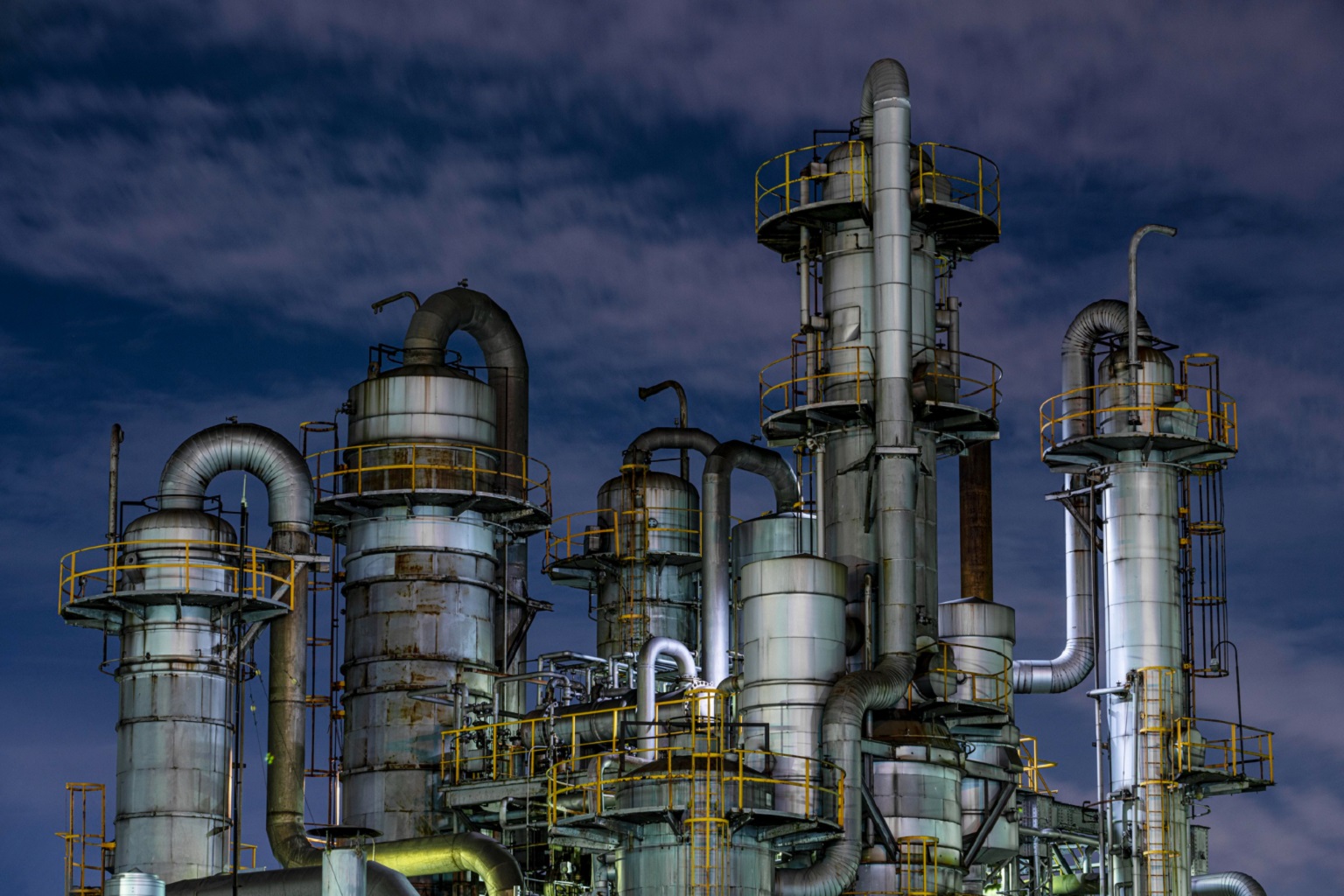
The oil and gas industry is undergoing a digital transformation, and IoT (Internet of Things) is at the forefront of this evolution. From exploration to refining and distribution, IoT is revolutionizing operations, optimizing costs, and improving safety. According to Intellisoft, the IoT in oil and gas market is projected to reach $27.7 billion by 2032, growing at a CAGR of 9.7%.
With increasing global energy demands, environmental concerns, and the need for operational efficiency, IoT for Oil and Gas is becoming a critical asset in the sector. By integrating real-time monitoring, predictive analytics, and automation, oil and gas companies can enhance productivity, minimize risks, and ensure regulatory compliance.
What’s the Role of IoT in the Oil and Gas Industry?
IoT in the oil and gas industry enables real-time data collection, asset tracking, remote monitoring, and predictive maintenance. By deploying smart sensors, connected devices, and AI-driven analytics, companies can gain better control over their operations, reduce costs, and enhance decision-making.
Key roles of IoT in the oil and gas sector include:
- Remote Monitoring of Equipment & Infrastructure – IoT-enabled sensors track the health of drilling rigs, pipelines, and storage tanks.
- Predictive Maintenance – AI-driven analytics detect early signs of equipment failure, preventing costly downtimes.
- Pipeline & Leak Monitoring – Smart sensors identify pressure drops, leaks, and anomalies in real time, reducing environmental risks.
- Workforce & Asset Tracking – GPS and RFID technology enhance worker safety and improve resource allocation.
- Energy Optimization – IoT improves energy efficiency by analyzing fuel consumption and reducing waste.
Advantages of IoT for the Oil and Gas Industry
Implementing IoT solutions offers several key advantages to oil and gas companies:
1. Enhanced Operational Efficiency
- IoT enables real-time automation and remote monitoring, reducing manual interventions and human errors.
- Improves supply chain logistics and inventory management.
2. Predictive Maintenance & Reduced Downtime
- Identifies early signs of equipment malfunction before failure occurs.
- Reduces unplanned shutdowns, ensuring continuous operations and cost savings.
3. Improved Safety & Regulatory Compliance
- IoT-based safety systems detect gas leaks, fire hazards, and toxic emissions, minimizing risks to workers and the environment.
- Ensures compliance with health, safety, and environmental (HSE) regulations.
4. Cost Optimization & Resource Management
- Reduces operational costs by streamlining processes and eliminating inefficiencies.
- Optimizes energy consumption, lowering fuel and power expenses.
5. Sustainable & Environment-Friendly Operations
- IoT helps track carbon emissions and waste management in oil refineries.
- Enables real-time environmental monitoring, ensuring compliance with global sustainability goals.
6 Comprehensive Use Cases of IoT for Oil and Gas Industry
IoT is transforming the industry across exploration, drilling, production, transportation, and refining. Below are six key use cases demonstrating real-world applications and benefits of IoT for Oil and Gas.
1. Remote Monitoring of Oil Rigs and Equipment
Why It’s Important:
Oil rigs and offshore platforms are in extreme environments, making manual inspections difficult and costly. IoT provides real-time monitoring of offshore and onshore operations, reducing the need for frequent site visits.
How It Works:
- IoT sensors track machinery performance and alert operators about anomalies.
- Cloud-based dashboards display real-time operational data, allowing remote teams to optimize performance and prevent failures.
- Drones and IoT cameras assist in visual inspections of offshore rigs, improving maintenance efficiency.
Impact:
- Reduces manual inspections by up to 40%
- Enhances safety by minimizing human exposure to hazardous environments
- Improves equipment reliability through continuous condition monitoring
2. Predictive Maintenance for Drilling Equipment
Why It’s Important:
Unexpected equipment failures can lead to production halts, increased costs, and safety risks. Predictive maintenance helps detect issues before breakdowns occur, reducing repair expenses and downtime.
How It Works:
- IoT sensors continuously monitor drilling machinery, pumps, and compressors for early signs of wear and tear.
- AI-driven analytics process sensor data to predict potential malfunctions.
- Automated alerts notify technicians to schedule maintenance before critical failures occur.
Impact:
- Reduces equipment failures by 30-50%
- Extends machinery lifespan by up to 25%
- Minimizes unplanned downtime, ensuring uninterrupted operations
3. IoT-Based Pipeline Monitoring & Leak Detection
Why It’s Important:
Oil and gas pipelines span thousands of miles, making leak detection a major challenge. IoT-powered monitoring prevents environmental disasters and minimizes revenue losses.
How It Works:
- Smart sensors measure pipeline pressure, temperature, and flow rates.
- AI-based analytics detect pressure drops or abnormal fluctuations, signaling potential leaks.
- Automated shut-off valves activate immediately in case of pipeline breaches, preventing oil spills.
Impact:
- Reduces oil spill risks by 45%
- Improves regulatory compliance and environmental safety
- Saves millions in potential leak-related damages
4. IoT-Driven Asset & Workforce Tracking
Why It’s Important:
Managing thousands of assets and employees across large oil fields is challenging. IoT enhances worker safety and optimizes asset utilization.
How It Works:
- GPS, RFID, and IoT wearables track workforce movement in hazardous zones.
- Real-time asset tracking prevents equipment loss and optimizes logistics.
- Emergency alert systems notify supervisors of accidents, enabling faster response times.
Impact:
- Improves worker safety with real-time emergency response
- Reduces asset loss and theft in oil fields
- Enhances operational visibility for better decision-making
5. Smart Refinery Operations
Why It’s Important:
Refineries deal with complex chemical processes, where even small inefficiencies can lead to high costs and energy waste.
How It Works:
- IoT-enabled sensors optimize temperature, pressure, and flow rates in real-time.
- AI-powered process automation adjusts refinery operations based on demand fluctuations.
- Digital twins simulate refining processes for improved efficiency.
Impact:
- Increases refinery efficiency by up to 20%
- Reduces energy waste and improves sustainability
- Ensures optimal production output based on real-time analytics
6. Energy Optimization & Carbon Footprint Reduction
Why It’s Important:
Energy-intensive oil and gas operations must comply with sustainability regulations and reduce emissions to meet global climate goals.
How It Works:
- IoT-based energy management systems optimize fuel usage and reduce emissions.
- AI-driven analytics monitor carbon output and suggest reduction strategies.
- Smart grids manage energy distribution, ensuring optimal efficiency.
Impact:
- Reduces carbon emissions by 30%
- Improves compliance with environmental regulations
- Optimizes fuel efficiency, lowering operational costs
Challenges in Implementing IoT for Oil and Gas Industry
While IoT offers immense benefits, its implementation comes with several challenges. Industries must overcome technical, financial, and security hurdles to fully harness IoT’s potential.
Here are key challenges and solutions of IoT for Oil and Gas Industry:
1. Cybersecurity Risks
Why It’s a Challenge:
IoT-connected oil and gas infrastructure is highly vulnerable to cyber threats. Hackers can exploit unsecured endpoints to manipulate equipment or steal sensitive data.
Solution:
- End-to-end encryption for all data transmissions
- Multi-factor authentication for device access.
- AI-driven threat detection for real-time security monitoring.
2. Integration with Legacy Systems
Why It’s a Challenge:
Many oil and gas companies operate with legacy equipment that lacks IoT compatibility, making integration expensive and time-consuming.
Solution:
- Adopt IoT gateways that allow legacy devices to connect.
- Gradual IoT deployment to minimize disruptions.
- Custom APIs and middleware for seamless integration.
3. High Infrastructure Costs
Why It’s a Challenge:
Deploying IoT at scale requires substantial investment in hardware, software, and connectivity infrastructure.
Solution:
- Start with pilot projects to measure ROI before scaling.
- Use cloud-based platforms to reduce infrastructure costs.
- Optimize energy use to reduce long-term operational expenses.
4. Data Overload & Processing Challenges
Why It’s a Challenge:
Oil and gas IoT networks generate massive amounts of data, making storage and real-time processing complex.
Solution:
- Implement edge computing for faster on-site processing.
- Use AI-powered analytics to filter relevant data.
- Automate real-time insights for decision-making.
5. Scalability and Connectivity Issues
Why It’s a Challenge:
Many oil fields and offshore platforms are in remote locations with limited internet connectivity.
Solution:
- Leverage satellite IoT networks for global coverage.
- Use LPWAN (Low Power Wide Area Networks) for long-range communication.
- Deploy private 5G networks for secure, high-speed connections.
Strategic IoT Solutions for Oil and Gas Industry
To successfully implement IoT for oil and gas companies, must follow a strategic approach that ensures scalability, security, and efficiency. Below are key strategies to maximize IoT’s impact in oil and gas operations.
1. Secure and Scalable IoT Infrastructure
- Deploy IoT gateways that allow connectivity between modern and legacy equipment.
- Use cloud-edge hybrid models to balance real-time processing and long-term data storage.
- Ensure network redundancy with satellite and LPWAN connectivity.
2. AI-Driven Predictive Analytics
- Implement machine learning algorithms to analyze sensor data for predictive maintenance.
- Use digital twins to create real-time simulations of oil rigs and refineries.
- Automate anomaly detection to reduce equipment failures.
3. IoT-Powered Energy Optimization
- Deploy smart meters to monitor fuel consumption and efficiency.
- Use AI to optimize energy distribution in real-time.
- Implement carbon tracking systems to ensure regulatory compliance.
4. Blockchain for Transparent and Secure Operations
- Use blockchain for supply chain tracking, ensuring transparent transactions.
- Implement smart contracts for automated oil trading agreements.
- Secure IIoT device authentication using blockchain encryption.
5. Workforce Safety and Compliance Solutions
- Equip workers with IoT-enabled wearables to track health and location.
- Implement automated emergency response systems using AI-powered IoT sensors.
- Use video analytics to enforce safety protocols in hazardous areas.
6. Remote Operations and Automation
- Deploy AI-driven robotic inspections for hazardous environments.
- Use drone-based IoT solutions for pipeline monitoring.
- Implement cloud-based remote-control centers to manage offshore rigs.
By adopting these strategic solutions of IoT for oil and gas, companies can reduce risks, lower costs, and improve operational efficiency, ensuring they stay ahead in an increasingly competitive and digital-driven market.
Conclusion
IoT is redefining the oil and gas industry, making operations safer, more efficient, and environmentally sustainable. From predictive maintenance and real-time monitoring to automated leak detection and workforce safety, IoT-driven solutions help companies enhance efficiency and reduce risks.
As the industry evolves, companies must strategically implement IoT solutions to stay competitive, drive innovation, and achieve sustainability goals.
Is your business ready for the future of IoT in oil and gas?
